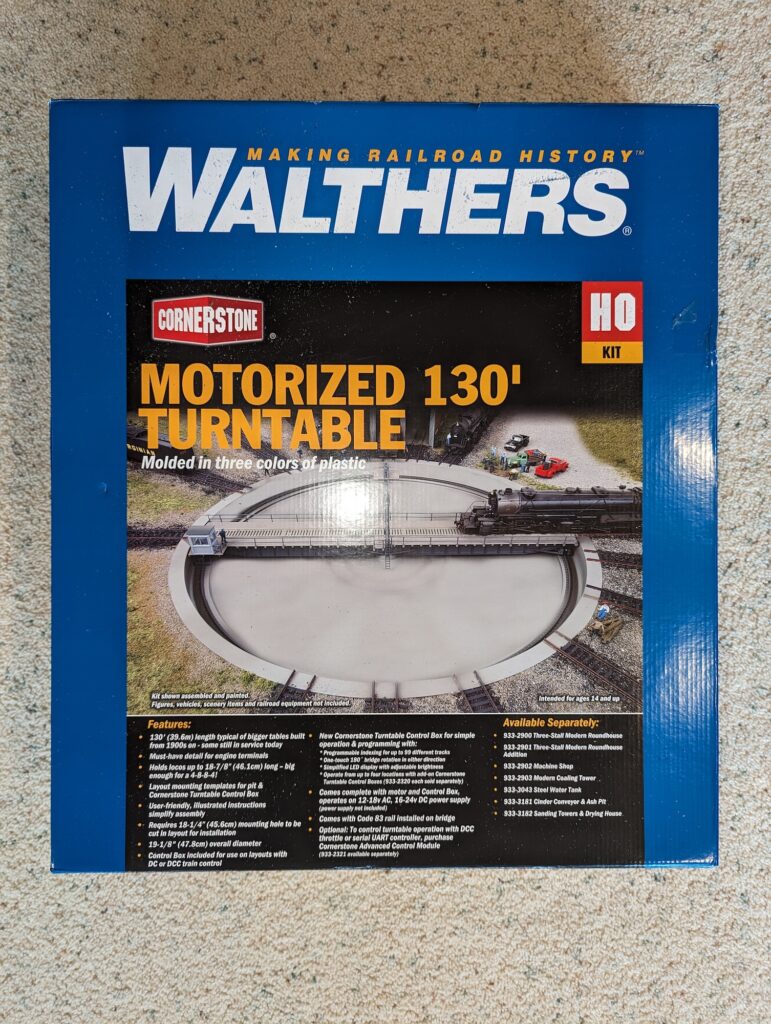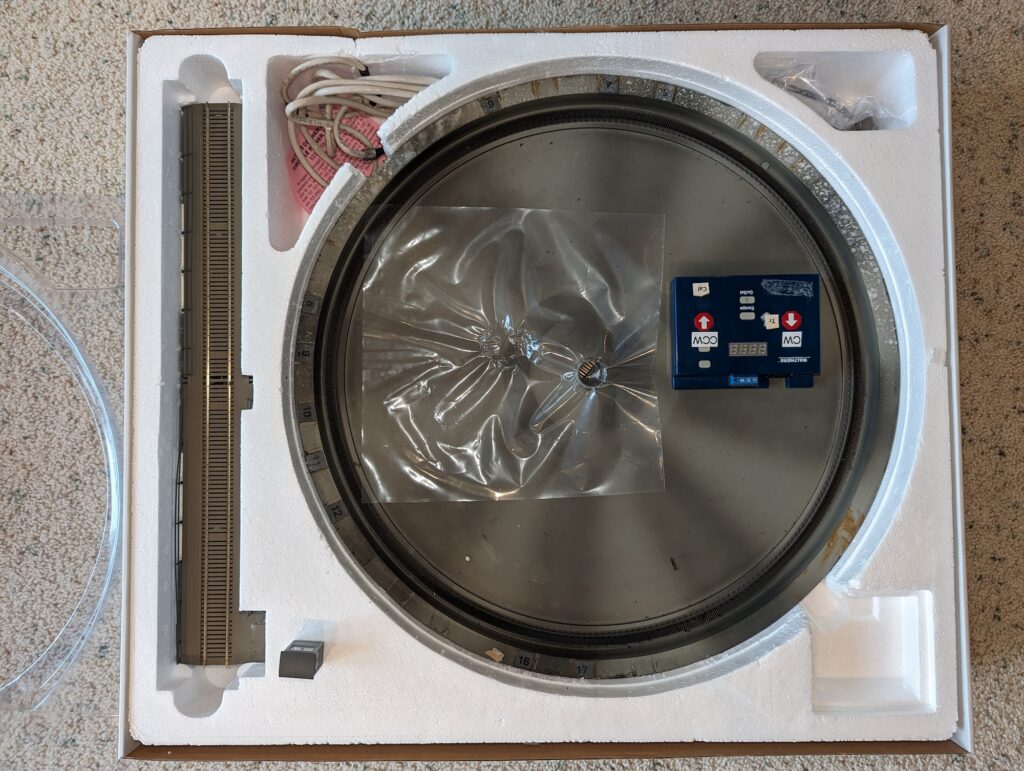Click here to read the Mt. Vernon Clinic Report for February 2024.
You are browsing archives for
Author: Anton Faulk
2024 Spring Meet Set For June 8th
By Bob Kenworthy
The 4th Division’s 2024 Spring Meet will be held June 8th, 2024. The Spring Meet will be held at the Northwest Railway Museum in Snoqualmie, WA.
The schedule will be:
7:30 to 8:30 am – Registration at the North Bend Depot
8:30 to 9:00 am – Train Ride from North Bend to Museum
9:00 to 9:10 am – Gathering Time
9:10 to 10:00 am – Clinics 1 and 2
10:10 to 11:00 am – Clinics 3 and 4
11:10 to 12:00 noon – Clinics 5 and 6
12:00 to 1:00 pm – Lunch and Annual Meeting
1:00 to 1:30 pm – Free Time at the Museum
1:30 to 2:00 pm – Return Train Ride to North Bend
2:00 to 3:00 pm – Travel Time
3:00 to 5:00 pm – Layout Open Houses
Additional information will follow as plans are finalized. Mark your calendar now and plan to attend.
Hi-Railers Annual Train Trip 2024
Article by Dan Peters, Photo by Al Lowe
It’s that time of year again. Time to put on your engineer’s hat and work boots and red bandana, and take a ride on a REAL ( prototype scale ) passenger train.
This year we’re heading south, to the beautiful Nisqually River Valley, to ride the Mt. Rainier Scenic Railroad. Our passenger train is powered by Polson Logging Co. number 70. This 100-year-old steam engine is a 2-8-2 logging locomotive, built by Baldwin and later used by Rayonier timber company on the Olympic peninsula. It’s been beautifully restored, and is ready to begin operations now that the COVID epidemic is past.
Our trip will be on on Saturday May 11th, 2024. We depart the station in Elbe WA at 11:00 am, for a round trip to the logging museum at Mineral WA. The museum is still closed for construction work by the new owners, but we should get views of the railroad equipment stored outside.
Our annual train ride and picnic is put together by the Hi-Railers module group, but is open to all Fourth Division and NMRA members.
To book your ride:
- Visit https://mtrainierrailroad.com/excursions/#scenic
- Select the “Book Scenic Train” button
- On the next page select the “>” arrow to “May 2024”
- Select “May 11” and “11:00 am”
The adult ticket price is $37.00 ( or is it $40.00 ? ), with discounts for kids. Sorry, there is no discount for seniors. Don’t forget to select the number of tickets in each age category.
Bring your receipt, either a print-out or on your cell phone, and check in at the ticket office in Elbe. They will issue you an “official” ticket before you board the train.

Join us for a fun steam train ride. And tell ’em John Henry sent you.
Dan
For Sale – Two Walthers 130′ Turntables
By Brian Pickering
From: The 4D HO Modular Club (Seattle Pacific and Eastern)
These are previous production turntables, NOT the current model.
One is used, but delivered in a very new box. Turntable is functional, turntable pit has some weathering, the control cabin is included, but not attached, the railings are somewhat the worse for wear, and the electrical bridge is missing. This has the oldest-style Heljan controller. This turntable was previously installed on the club’s Roundhouse module. No manual (available online). Asking $125


The second is new, delivered in a box that has known much better days. This was purchased as new original stock, albeit apparently moved around multiple times prior to sale. Used a few times in working on DCC programming (as a testbed for the club module), we ended up buying the new-model Walthers TT and accessory DCC converter board. Includes all components except the manuals (available online). Asking $200


Both of these work well with the included controller. We found them challenging to use under DCC. If you’re not interested in the DCC control, these are both good deals.
Also posted on the club website: https://4dho.com/2024/01/28/two-walthers-130-turntables-for-sale/
Brian Pickering
bpickeri@gmail.com
Skagit Valley & Whidbey Feb 2024 Newsletter
Click here to read the February 2024 issue of The Skagit Valley & Whidbey Clinic Newsletter.
Hi-Railer’s Ridgefield Show Report
By Ed Ives
It’s not often that you can say that model railroading is possibly life threatening and at the very least challenging. After spending a week studying the weather forecasts we decided to go ahead for the GTS Ridgefield train show. The Friday trip down I-5 was the best in a long long time, almost pleasant with a dry highway, little traffic and snow plows looking for work but none to be had.
We arrived at the venue with two hours to spare and we were greeted with news that the site map had to change due to cancellations and the new map was not ready. Eventually we were relocated to the middle of the hall and with that location it was desirable to build our layout in the mirror image of that originally intended or as best that we could. We pre-set the height of the individual modules to 36″ as over the years they were all over the show making it difficult to level the layout. It all went together quite well and trains were running by the time we left for our hotel five miles to the south in Vancouver Wa.
Saturday dawned with snow falling and we arrived at the venue by 8:00 am to complete the layout by hanging the drapes and completing the scenery. We had trains running at true three rail 0 gauge speed by the time the show opened. Surprisingly for me at least, there was a steady stream of public, not crowds, coming through the doors for most of the day while the snow continued to fall.
By the end of the day the parking lot was deep in snow, up to the wheel centers in our car, or so the snow had drifted. All the restaurants local to our hotel were closed but Fred Meyer was open with the offering of fried chicken and more fried chicken.
On Sunday the public were a bit slower coming into the venue but the numbers built up during the day. The trains however ran quite well and with no trains on the floor which is always good. Soon it was time to tear down and pack out with the big question, for me at least, dare I attempt the trek home that night or wait until the morning. A quick check of the highway led me to believe that the best action would be to stay another night in the hotel and make an early morning run north. The snow had stopped but there was plenty of it on the highway and was not conducive to pulling a trailer.
Monday morning once north of milepost 30 found the highway in excellent condition, air temperature about 15 degrees, light traffic moving at about 60 mph. There was just one stretch of fog to deal with but I made it home in three hours.
On the lighter side, for me at least, my wife had gone to the grocery store that morning and on arriving there found that the car doors had frozen shut and she could not get out of the car. She had earlier defrosted the doors with hot water and now paid the penalty. Not to waste the exercise she stopped at the side of the road to play Poke Mon Go just as I drove past. On pulling up at the house she followed and I was able to free her from her icy cage. My timing was excellent and I got an attaboy for that.
Ed
Manager of Donations
By William Messecar
The 4th Division of the NMRA based in Western Washington and Alaska is looking for a volunteer to serve as Manager of Donations. The 4th Division occasionally receives donations of model railroading supplies/books and products from individuals and families looking to clear out surplus or estate items.
We need an individual in the Puget Sound area who would evaluate items offered and accept those items which can be resold for use by 4D and provide our IRS 501-C3 information (tax deductible group). Donated items would then be offered for sale at swap meets or online and the raised funds used for the benefit of 4D. The manager would be able to evaluate proposed donations, store a limited amount of such items and price, sell and ship such items. If you love going to swap meets this is the job for you.
Please apply to the 4D Division Superintendent William Messecar if interested.
Call For Monroe Train Show Volunteers
By Russ Segner
The annual Monroe Train Show is February 24th and 25th. The 4D will have three tables to show and sell many items donated to 4D by estates and collections of members and others interested in promoting model railroading.
The 4D had benefited substantially from these sales. I am looking for some help from members to set up the displays and provide help in the sales both Saturday and Sunday. If you can help, please contact me this week to set a time you can help. It will be greatly appreciated.
Russ
206 200 2211
PCR 2024 Convention Early Bird Registration
By Russ Segner
The great Early Bird convention rate will expire on January 15th, register now to not miss this offer. The 2024 PCR Convention will be hosted by the Coast Division at the Sonesta San Jose Hotel from April 24-28, 2024. The Sonesta is ideally located for great layout tours, prototype visits, and other activities. The hotel has great convention facilities, enabling a vendor and swap meet.
To encourage members to register early, we are offering two prizes in a give-away drawing for all in-person attendees registered by January 15th. Register now so you do not miss out!
Early Bird Give-Away
All PCR 2024 attendees that have registered by midnight on January15th will be eligible for a drawing for two great prizes.
Prize 1 – Free Upgrade to a Sonesta Suite for up to 4 Nights
This prize will let the winner upgrade their room from the normal $139/night hotel room to a suite. This will be valid for up to four ($) nights during the convention. Win and you can not only sleep in style, but have a party with your friends in your suite!
Prize 2 – $50 Gift Certificate
This prize is a $50 gift certificate that can be used to purchase any item in in the Vendor, Swap Meet or PCR Consignment Depot. The prize will be in the form of 10 – $5 certificates that can be used with any of the vendors or swap meet sellers.
Russ
Mount Vernon December 2023 Clinic Report
Click here to read the Mt. Vernon Clinic Report for December 2023.
